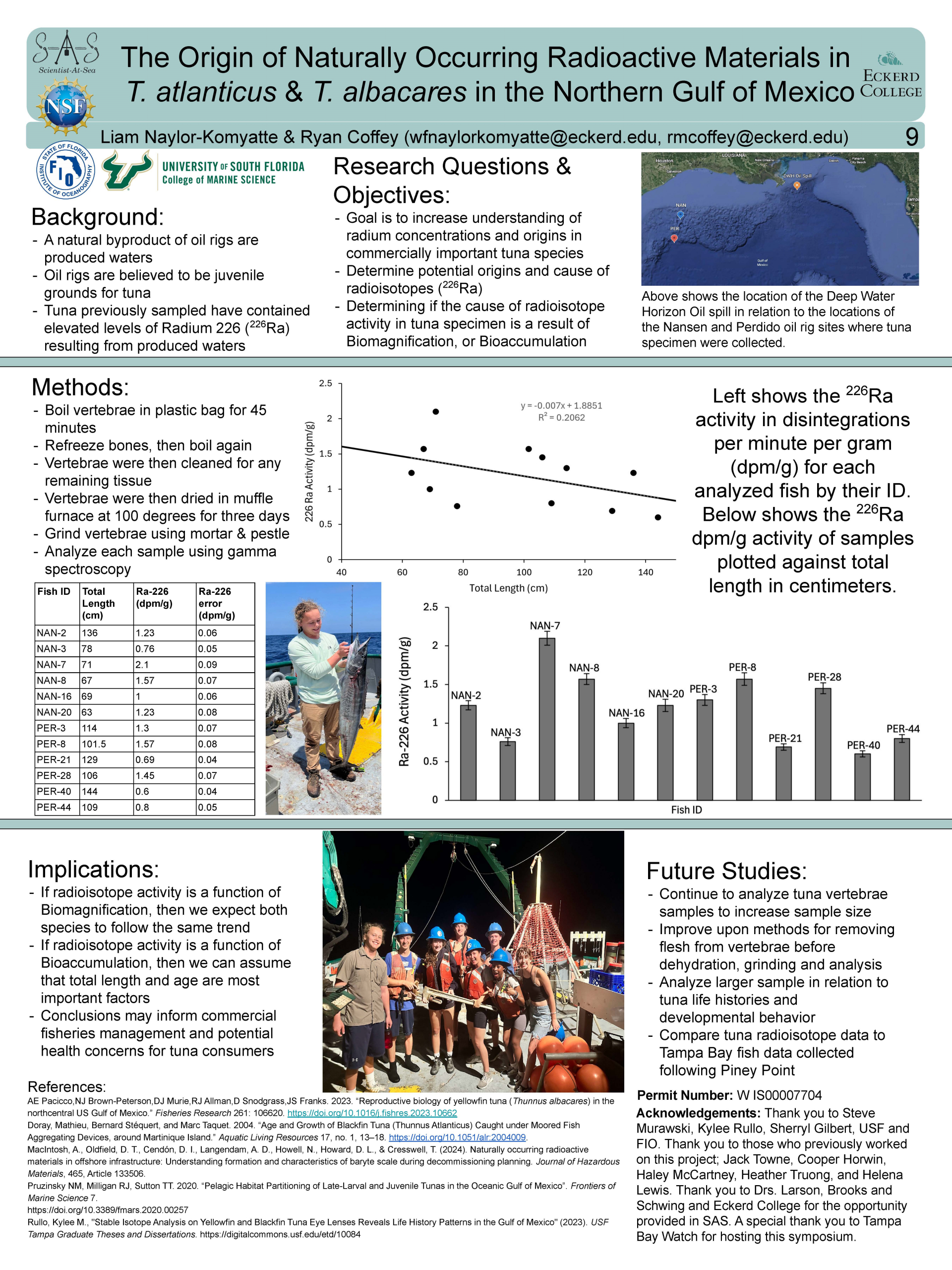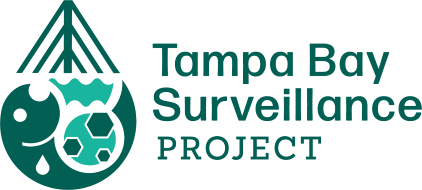Congrats to Eckerd’s Scientist-at-Sea Student Researchers!
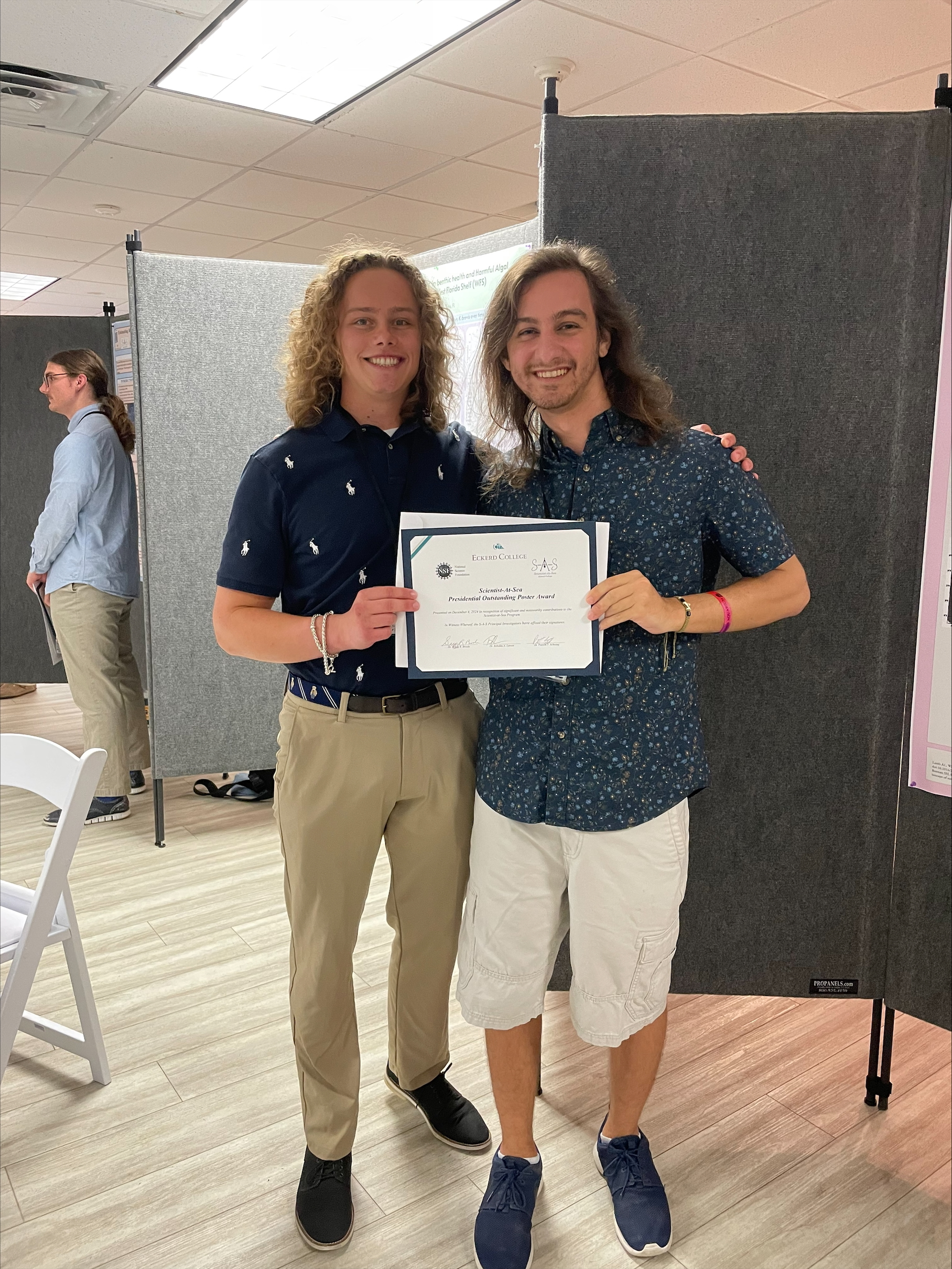
Liam Naylor-Komyatte (left) and Ryan Coffey (right) holding their S-A-S Presidential Outstanding Poster Award
The Tampa Bay Surveillance Project is comprised of researchers from the University of South Florida College of Marine Science and Eckerd College – both located in St. Petersburg, Florida.
Eckerd College hosts an incredible NSF-funded Scientist-at-Sea (S-A-S) program, where since 2022, students have gained real-world marine research experience, designing their own projects and collecting and analyzing data from multiple-day research cruises in the Gulf of Mexico. From Eckerd College: The goal of the S-A-S program is to increase the number and diversity of students entering the geosciences workforce by increasing awareness, accessibility and enhancing pathways into the geosciences. The research projects encompass a wide variety of oceanographic and environmental science fields (e.g. geology, chemistry, and biology). The symposium provides students a chance to produce professional products (poster presentations), develop science communication skills, collaborate with colleagues, and develop networking skills. On December 4th, the 2024 cohort presented their findings at the S-A-S Research Symposium, hosted by Tampa Bay Watch.
Ryan Coffey and Liam Naylor-Komyatte won the Presidential Outstanding Poster Award that evening. We are especially proud, as Ryan has been an intern with TBS since late May, and Liam has helped out in the lab on several occasions. Read on for Ryan’s account of his S-A-S research and symposium experience.
Congratulations, Ryan and Liam!
As a part of the Scientist-At-Sea (SAS) program Liam and I analyzed vertebrae for radioisotope activity of Radium-226 (226Ra) in two species of tuna, Blackfin Tuna (Thunnus atlanticus) and Yellowfin Tuna (Thunnus albacares). Due to the chemical similarities between Radium and Calcium (both alkaline-earth metals), radium replaces calcium as the primary constituent of bones over prolonged periods of exposure, which is why vertebrae are used for the analysis. The samples collected in the study were caught near two different oil rigs, Nansen and Perdido, as oil rigs are believed to be juvenile grounds for tuna species and are ecological hotspots. An essential aspect of these oil rigs is that they have a natural byproduct called produced waters, which contain elevated levels of radioisotopes, primarily 226Ra. The primary goal was to determine the relationship between total length, and 226Ra activity. Another critical aspect of the research was examining whether bioaccumulation (the increase in the concentration of contaminants or substances over a lifetime) or biomagnification (the increase in these contaminants as trophic level increases) was the primary cause of 226Ra activity. Lastly, the objective was to create a baseline for what is considered normal activity in this vital commercial fish and not to alarm the public by identifying that all the tuna have radium.
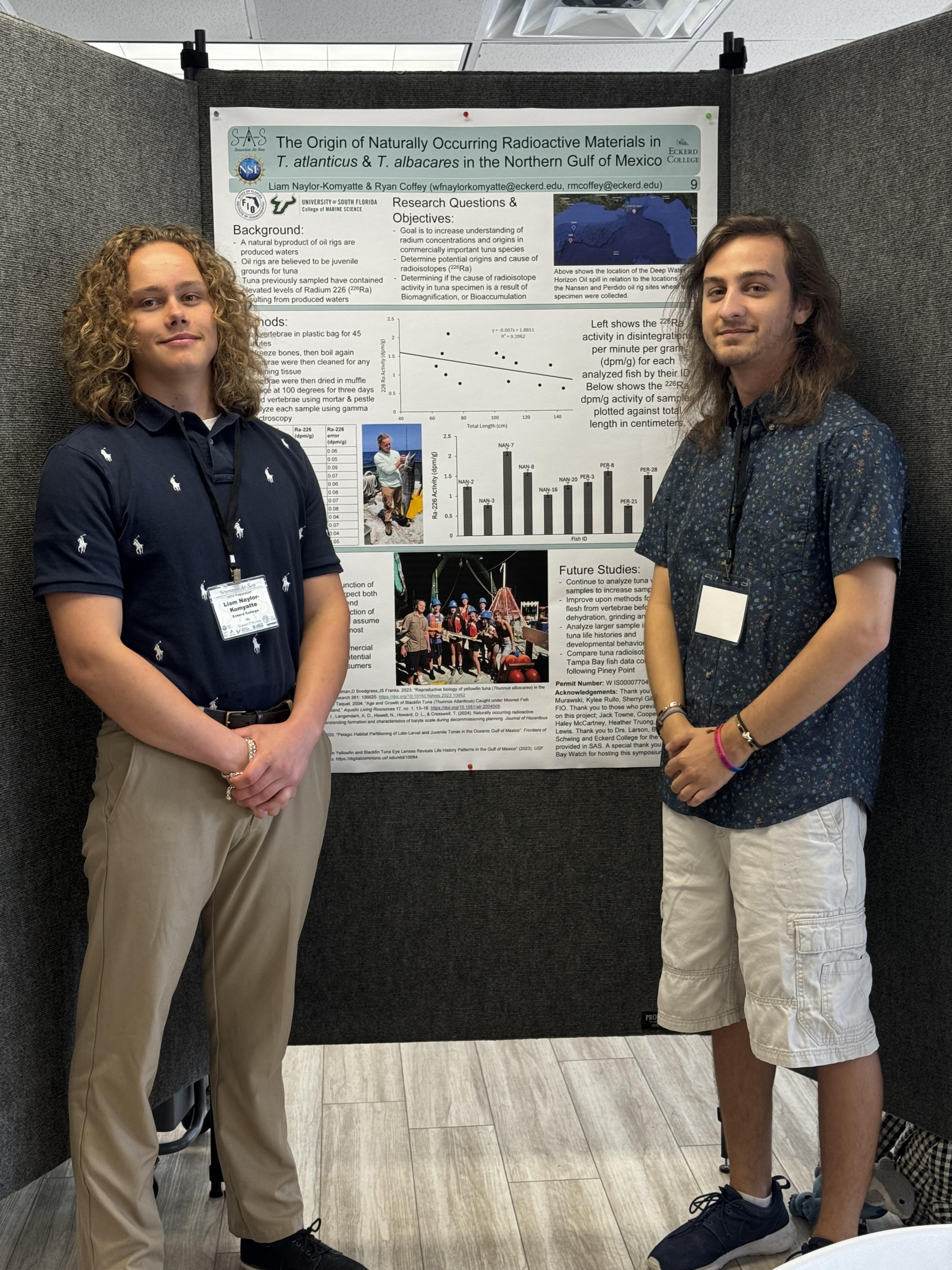
Liam and Ryan in front of their poster: The Origin of Naturally Occurring Radioactive Materials in T. atlanticus & T. albacares in Northern Gulf of Mexico
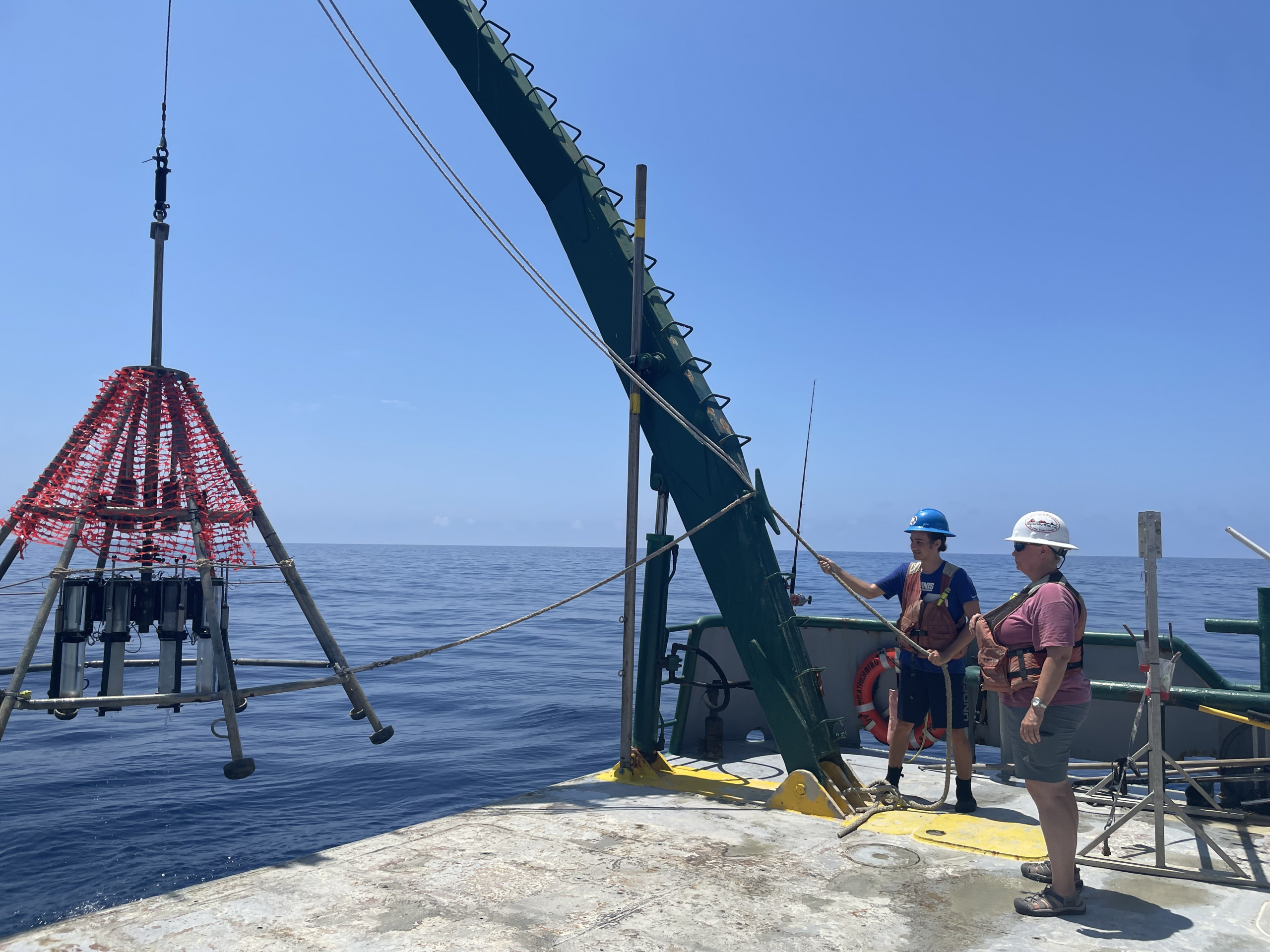
Science in action: Ryan, with Dr. Bekka Larson supervising, hauls a CTD instrument back aboard the R/V Weatherbird.
Not everything was without its hardships. During our initial steps of the project, we had just placed the tuna vertebrae in a muffle furnace to dehydrate but were forced to take them out no more than 15 minutes later when Eckerd announced the evacuation due to Hurricane Helene. At the time, it was not anticipated that the evacuation order would be in place for over a month. As a result, Liam and I had to shift our primary focus for most of the project from gathering data to instead collecting information on trophic levels, management, and any similar research. One piece of literature that was most helpful to the project was Kylee’s thesis, which focused on stable isotope analysis on Yellowfin and Blackfin Tuna eye lenses. No matter how many times Liam or I researched a question or had a new idea and were consistently redirected to her work; these were always funny moments when we were still working remotely. The TBS project and its members were also extremely important contributors to the project. At times, it felt like we had access to a cheat-sheet where all we needed to do was ask the right questions, and we made sure to ask plenty of them. The information I have gained throughout my time interning for the TBS project proved to be invaluable, not only because of the potential similarities between it and our own project, but also because of how it changed my mindset, equipping me with a new perspective on how to approach our hypothesis and data.
The SAS program culminated with the research symposium, which felt surreal from start to finish. It took Liam and I a few tries presenting to guests at the symposium to get into a stride, but once we hit that rhythm, everything went smoothly. When the award ceremony commenced, and they began to call names, I was so tired that I wasn’t even sure I would recognize my name. Only when Liam whispered to me, “There’s no way this is our award,” and when President Annarelli of Eckerd moments later announced our names, I regained consciousness; our faces were red, and we almost bounced with excitement. Although that marked the end of our time in the SAS program, Liam and I plan to continue our research; he will continue to focus on tuna, and I will shift my focus to isotope analysis of redfish caught for the TBS project. We hope to present again in the near future.
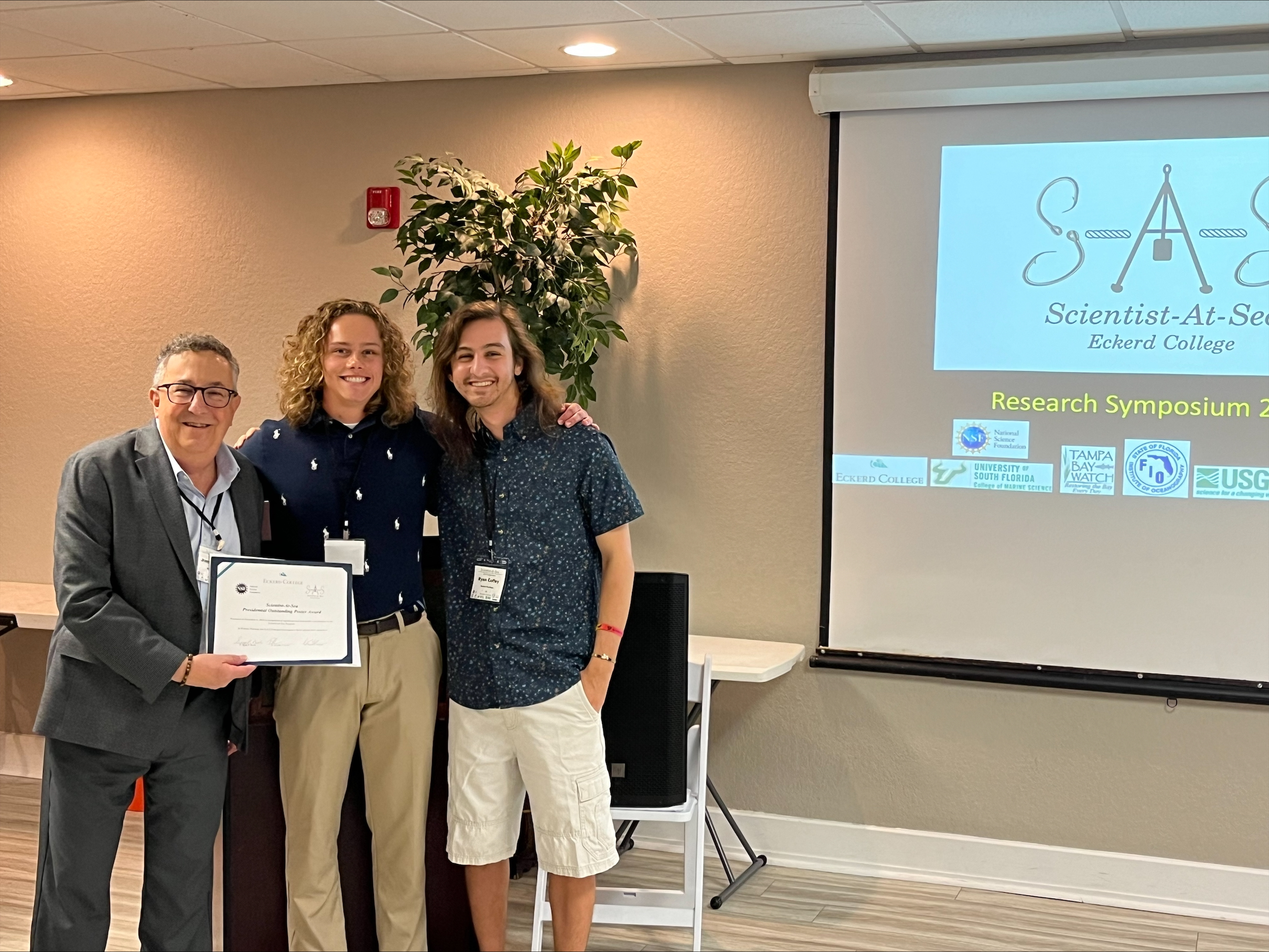
Eckerd President Dr. James Annarelli handing Liam and Ryan their award
